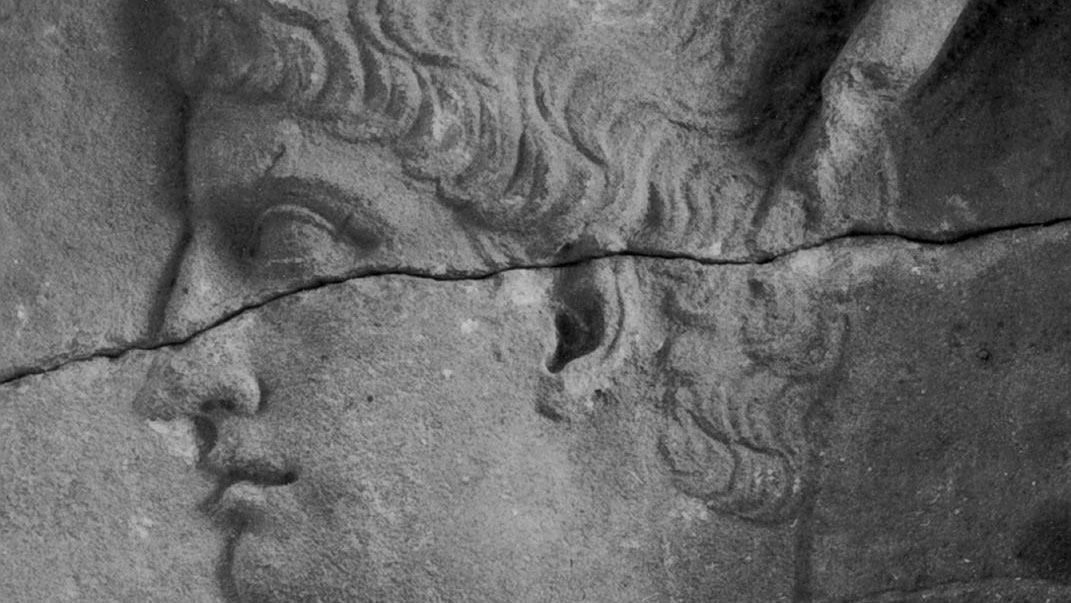Rome
Come face to face with the people of the ancient Roman empire through artifacts ranging from miniature glass vessels to large marble reliefs.
Upper Level
Included with Museum Admission
Above: Statue, Lake Nemi, 125 BCE, MS3483

Come face to face with the people of the ancient Roman empire through artifacts ranging from miniature glass vessels to large marble reliefs.
Upper Level
Included with Museum Admission
Above: Statue, Lake Nemi, 125 BCE, MS3483

Renowned for its geographical scope and cultural impact, the Roman Empire blended the customs and traditions of diverse races, language groups, and cultural backgrounds.
Above: Statue, Lake Nemi, 125 BCE, MS3483
Unravel the story of the Roman Empire through artifacts across centuries, from Rome’s founding to its eventual control of Italy as well as North Africa, Spain, Greece, and Asia Minor.
Come face to face with ancient Romans and their gods and goddesses. Roman domestic life is vividly illustrated through objects from their houses, including dining vessels, household decorations such as painted wall plasters and mosaics, and utilitarian objects like sections of lead pipe that brought them drinking water. A large model of a Roman house similar to those excavated at Pompeii and Herculaneum gives context to these objects. Other displays of jewelry, lamps, pottery, bronze objects, and coins round out the picture of Roman life.




The Roman empire extended more than 2,000 miles in each direction from Rome, encompassing lands as distant as modern-day Syria. This limestone tomb relief is from the ancient city of Palmyra, which was an important intersection of trade routes. Carved in the early 3rd century CE, the relief shows a woman wearing the local style of dress and ornate jewelry; the statue would originally have been painted. B8904
This boat scene mosaic is from a Roman city in modern-day Tunisia, made in the early 3rd century CE. Roman mosaics often incorporated Greek myths—this one shows the legendary Greek hero Theseus escaping King Minos’ labyrinth (home to the minotaur) on Crete. MS4012
The body color of the ancient glass derives from both the ingredients used and the method of manufacture. Glassmakers added various metal-rich minerals to the small amounts of iron already present in beach sand, whose silica, when mixed with sodium, made up ancient glass. The shimmering iridescence is an unplanned by-product of weathering caused by moisture, soil, and silt.MS5494
A replica of a statuette of Selinus, king of Dionysos's band of followers, astride a full wineskin. This is one of many replicas of objects excavated from the houses, shops, and shrines of Pompeii and Herculaneum, cast from molds taken from the original objects in the Naples Museum. Pompeii and Herculaneum were destroyed in a volcanic eruption in 79 CE. Smaller household objects that were in use at that time, such as this one, allow us a glimpse of some extraordinary finds that were recovered from the two doomed cities. MS3688

This large marble relief embodies both politics and practicality. One side of the relief contains an inscription honoring the Roman emperor Domitian, as a commemorative monument erected in his honor in 95 CE at Puteoli, near Naples. After his assassination and official disgrace by the Roman Senate, the block was chiseled off and recarved into a relief honoring the later emperor Trajan, who ruled the Roman empire at the height of its power.
Learn More
Authors: Irene F. Bold, Donald J. White, Ann Blair Brownlee, and Jean MacIntosh Turfa

Expedition v. 57:1
Article by Ann Blair Brownlee & Lynn Makowsky
For more than 50 years, Penn Museum visitors have been welcomed by a large bronze classical statue, a copy of a work known as the Borghese Satyr. Read more about its history and the collection of more than 450 bronze reproductions given to the Penn Museum by Philadelphia department store founder and philanthropist John Wanamaker.